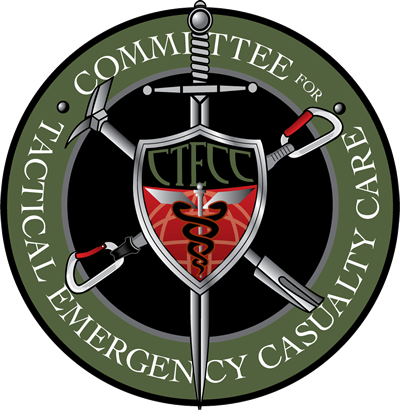Guidance
TECC Phases
- Direct Threat Care: Emphasis on mitigating the threat, moving the wounded to cover or an area of relative safety, and managing massive hemorrhage utilizing tourniquets. Additionally, emphasis was placed on the importance of various rescue and patient movement techniques, as well as rapid positional airway management if operationally feasible. Treatment and operational requirements are the same for all levels of providers during this phase of care.
- Indirect Threat Care: Initiated once the casualty is in an of relative safety, such as one with proper cover or one that has been cleared but not secured where there is less of chance of rescuers being injured or patients sustaining additional injuries. Assessment and treatment priorities in this phase focus on the preventable causes of death as defined by military medical evidence: Major Hemorrhage, Airway, Breathing/Respirations, Circulation, Head & Hypothermia, and Everything Else (MARCHE). Four different levels of providers were assigned to scope of practice and skill sets based on level of training and certification.
- Evacuation Care: An effort is being made to move the casualty toward a definitive treatment facility. Most additional interventions during this phase of care are similar to those performed during normal EMS operations. However, major emphasis is placed on reassessment of interventions and hypothermia management.
Working Groups
Areas of the guidelines which may need future revisions/additions and medical topics that could influence or change the guidelines were identified at the December Committee meeting, and working groups on each of these were established. Each working group has been charged with examining all available literature on the topic selected and with developing recommendations for guideline changes to be presented for vote to the Guidelines Committee.- Calcium & the Lethal Triad
- Defining Direct Threat/Indirect Threat
- First Receivers Working Group
- Implications of TECC on triage
- Integration of Rescue operations and Casualty Collection Points into TECC
- International Working Group
- K9 TECC
- Psychological Threat Mitigation
- Special populations and TECC
- TECC & CBRNE
- TECC science
Further Research
C-TECC was founded to address a glaring operational gap that exists nationwide concerning the rescue and phased treatment guidelines during high risk operations. As part of this process, we identified several areas of patient care that still need significant research conducted before definitive guidelines can be made. This list is not all inclusive and will remain an active document as research is completed and new areas lacking data are identified. Until data can be developed, existing standards and recommendations shall remain unchanged. The identified areas of research serves as a call to our scientific and academic communities to focus funding and efforts to provide solid data on which to build the TECC Guidelines.C-TECC will not offer specific product endorsements, but strongly encourages individual agency heads and medical directors to investigate which products best meet their needs using data accumulated by C-TECC.
Areas for research:
- Pediatric tourniquet use
- Prehospital TXA use
- Resuscitation guidelines for pediatrics
- Hemorrhage control in anti-coagulated patients (coumadin/plavix/etc)
- Methods of evacuation and effect on survival
- Physiologic monitoring of casualties in mass casualty
- Effect of obesity on TECC equipment and Guidelines
- Complications from needle decompression
- Wounding patterns from active shooter
- Effect of TBI management on hypotensive resuscitation
- TEMS utilization nationally
- First Responder deaths and injuries during high risk operations
- Extremes of age and needle decompression
